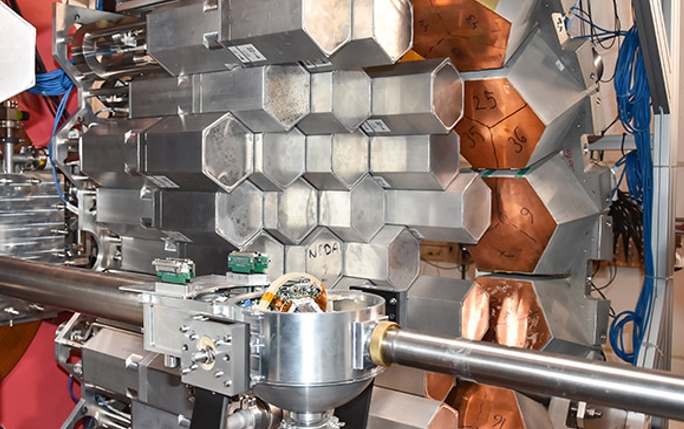LIV.DAT student Fraser Holloway presents at AGATA Week

In the field of nuclear physics two detectors dominate all others in pushing the boundaries of Gamma-Ray Spectroscopy. The Advanced Gamma Tracking Array (AGATA) and the Gamma Ray Energy Tracking In-Beam Nuclear Array (GRETINA) provide unparalleled resolution and P/T ratio due to their complex construction, Pulse Shape Analysis (PSA) and Gamma-ray tracking.
On the 10th-14th of September LIV.DAT student Fraser Holloway attended the annual collaboration meeting ‘AGATA Week’ held at the IPHC in Strasbourg. AGATA Week provides an opportunity to convey detailed updates on the several processes involved in utilising the AGATA detector to its full potential alongside improving networking & communication within the collaboration. Whilst many aspects of the complex processes used in AGATA were discussed, special attention was given to the improvement of techniques involved in Pulse Shape Analysis, a critical part of the AGATA toolchain which is considered one of AGATA’s main limiting processes.
In addition to providing his observations and solutions to some of the issues faced by the collaboration Fraser delivered a presentation on what he had accomplished during the first year of his PhD in the development of novel PSA algorithms for AGATA.
Fraser’s talk consisted of proposed optimisations to the data structure used by the AGATA collaboration, methods of dimensionality reduction, topological optimisation of the search space and exploiting the recent advancements in GPU accelerated Machine Learning for signal classification and tree navigation. Several of the methods that were proposed by Fraser were only made possible by utilising skills learned from the combination of highly specialised modules provided by the LIV.DAT programme.
In addition to Fraser’s talk, Dr Andrew Boston delivered several talks relating to the contributions made by Liverpool’s Nuclear Physics department in the development of novel position sensitive germanium detectors. Special focus was given to the development of Liverpool’s prototype mobile Compton Camera, Scanning Table, and inverted segmented point contact detector SIGMA. Dr Boston also provided details on customer acceptance tests of recent AGATA crystals and the proposed timeline for future crystal development.
Whilst Fraser’s contributions to the AGATA collaboration are relatively new the work Fraser presented prompted several in-depth discussions within the collaboration that are likely to have a large impact regarding the future development of AGATA. As a result of the collaboration meeting Fraser has taken an active role in the simulation of detector responses and experimental validation of future crystals in the detector array.
Following AGATA week Fraser was invited to a summer school organised by the GRETINA collaboration on Gamma-ray tracking. This school taught PhD students and Post-docs the necessary skills to process raw GRETINA data into a fully tracked spectrum. Fraser hopes to apply some of these techniques in his own work in the near future.
Liverpool has played a significant role in the development of the AGATA detector for many years. We hope that with continued investment from the physics department and from labs across the world the applications of one of the world’s best gamma spectrometers can only improve.